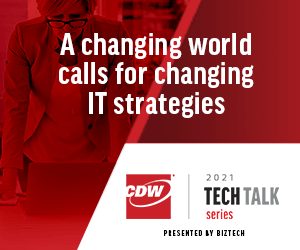That’s a boon to businesses that need to subscribe to cloud services or buy software — from videoconferencing tech to IT security solutions — to allow employees to work remotely. More specifically, the law says PPP funds can be used for any software or cloud service that facilitates business operations, product or service delivery, as well as payroll, human resources, accounting and inventory software.
“So many small businesses have had to send their employees home to work. Now is a good time to potentially look at upgrading your software or cloud computing software investments. That would be covered in the expenditures,” Milito says.
Get Federal Money to Keep Workers Safe
The second PPP round also covers worker safety expenses, including personal protective equipment, hand sanitizer and physical barriers, such as transparent shields or panels between desks, she says.
The law also specifies that PPP funds can be used for expanding indoor or outdoor spaces, installing air ventilation or filtration systems and adding onsite or offsite health screening capabilities. On the technology front, that includes temperature screening kiosks, Milito says.
Other technologies that improve worker safety could potentially be covered under PPP, such as digital signage that reinforces safety measures. Right now, however, it’s a gray area, she says.
MORE FROM BIZTECH: The top security challenges for small businesses in 2021.
Milito recommends that small businesses check with their lenders or with the Small Business Administration to see what technology and other expenses are allowed. In the near future, the SBA is likely to provide more guidance that spells out more precisely what are allowable expenses, she adds.
“It’s worth investigating if it’s something your business invested in and it’s about worker protection,” she says.
How the Second PPP Loan Works
Businesses can apply for a second PPP loan between Jan. 13 and March 31, 2021. Qualified companies can borrow up to $2 million, but most small businesses that are NFIB members will get $150,000 or less, Milito says.
Most businesses can borrow up to 2.5 times their average monthly payroll costs in 2019 or 2020. Businesses in the accommodation and food services sector can borrow 3.5 times their average monthly payroll costs in 2019 or 2020, according to the SBA.
To be eligible for the second draw, a business must have received a first draw PPP loan and used or plan to use the full amount for authorized purposes, have no more than 300 employees and demonstrate a 25 percent reduction in gross receipts between comparable quarters in 2019 and 2020, the SBA says.
For the loan to be forgiven and turned into a grant, businesses must use at least 60 percent of the funds for payroll costs.













